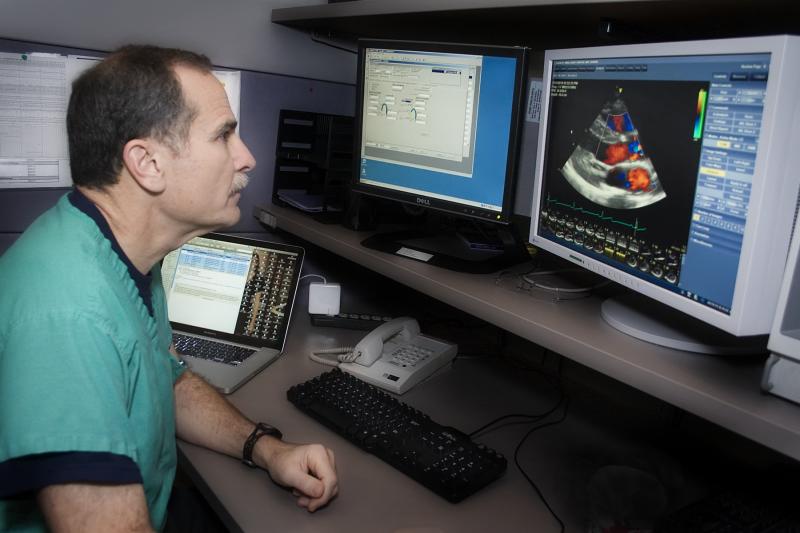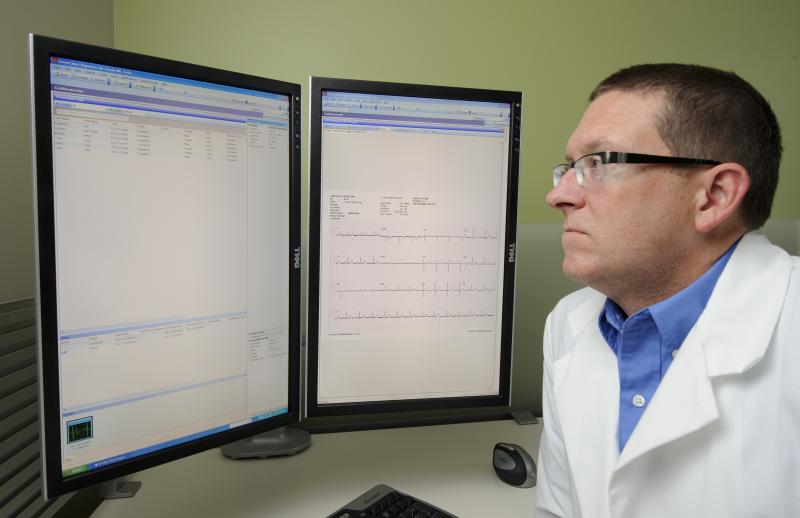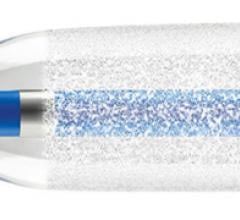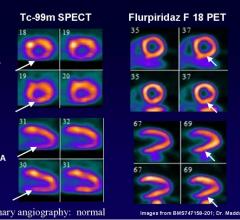
People with acute coronary syndrome (ACS) who undergo an angioplasty procedure and receive a heart stent are prescribed an oral antiplatelet (OAP) therapy and aspirin to help prevent a heart attack, a blood clot in their heart stent (stent thrombosis), or even death.[3]
A retrospective review of 633 adults and children who underwent bioprosthetic pulmonary valve replacement (PVR) for congenital heart disease between 1996 and 2014 indicated that the risk of re-intervention was five times greater for children than adults. In addition, the likelihood of re-intervention decreased by 10 percent for each increasing year of age at surgery. Valve type was another important determinant of re-intervention, according to Rio S. Nomoto, BA, medical student at Tufts University School of Medicine, who presented the results of this research at the 95th American Association for Thoracic Surgery (AATS) Annual Meeting in Seattle on April 28.
The Spectranetics Corporation announced it is accelerating investments in the Stellarex drug-coated balloon angioplasty (DCB) platform for treatment of below the knee (BTK) peripheral artery disease. The company estimates this will represent a $150 million market opportunity by 2020.
Providing exceptional cardiovascular care for patients to achieve the best possible outcomes is the number one goal for ...

Ultrasound can increase the rate at which heart cells beat, researchers from Drexel University report. In their paper “Ultrasound-Induced Modulation of Cardiac Rhythm in Neonatal Rat Ventricular Cardiomyocytes,” published ahead-of-print in the Journal of Applied Physiology, they describe the ultrasound settings that can change the beat frequency of cardiac cells.

Transmyocardial laser revascularization (TMLR or TMR) was introduced in the late 1990s as a method to offer relief to patients with incapacitating angina that were poor candidates for other procedures such as coronary artery bypass graft surgery or balloon angioplasty and stenting. The basis for the procedure is use of a laser to bore small holes from the ventricle into the myocardium, allowing blood to flow directly into the heart muscle without the need to travel through blocked coronary arteries. The belief is that this process helps enable angiogenesis.

Hospitals with electronic health records (EHRs) for ischemic stroke patients did not demonstrate better quality of care or clinical outcomes for those patients when compared to similar hospitals without EHRs, according to a study published in the Journal of the American College of Cardiology.
Cardiac positron emission tomography (PET) is growing in popularity among cardiologists because it provides the ability ...

Medtronic plc announced the start of a clinical study to determine whether paroxysmal and persistent atrial fibrillation (AF) can be treated with a combination of two ablation procedures targeting different anatomical locations – specifically, the pulmonary veins and the renal arteries. Study patients will also receive an implantable cardiac monitor to track their heart rhythm on an automatic and continuous basis. AF is a cardiac rhythm disorder affecting an estimated 2.7 million people in the U.S.
Biotronik announced that a unique physiologic sensor is now available in the latest family of cardiac resynchronization therapy defibrillator (CRT-D) devices. Closed Loop Stimulation (CLS) is the only cardiac sensor capable of appropriately adapting heart rate in response to physiologic demands independent of body movements or respiratory rate.

New research, published in the journal Radiology, suggests some types of a popular contrast agent used in magnetic resonance imaging (MRI) exams may remain in the brain for years, but that the long-term effects are unknown.
When performing radiofrequency (RF) ablation to treat cardiac arrhythmia, medical professionals must balance the safety ...
Carestream showcased the advanced interoperability of its Clinical Collaboration Platform (CCP) at the IHE-Europe (Integrating the Healthcare Enterprise) Connectathon held April 20-24 in Luxembourg. Carestream announced that the CCP product suite successfully passed all integration tests at the Connectathon including all profiles for its universal viewer, vendor-neutral archive (VNA) and image capture solutions. Carestream is also among the first VNA suppliers to implement HL7's new Fast Healthcare Interoperability Resources (FHIR) framework.
Research firm KLAS released a new report on electronic medical record (EMR) usability and product performance over the past two years, revealing how physicians and other users rate various vendors and solutions. The report, entitled “Physician Leadership Weighs In on Acute Care EMR Usability” compares usability performance in the acute care EMR market segment.
Results from Lantheus Medical Imaging Inc.’s first Phase 3 study of flurpiridaz F 18 for myocardial perfusion imaging (MPI) were presented at the International Conference on Nuclear Cardiology and Cardiac CT (ICNC12) in Madrid, Spain. The oral presentation was made by Jamshid Maddahi, M.D., professor of medicine (cardiology) and molecular & medical pharmacology (nuclear medicine), David Geffen School of Medicine at UCLA, in the “Important Clinical Trials and Registries in Nuclear Cardiology” session of ICNC12.
Change Healthcare Cardiology Hemodynamics is an integrated hemodynamic monitoring system for monitoring vital signs and ...

A large-scale, multicenter study has shown that therapeutic hypothermia does not improve survival rates or reduce brain injury in infants and children with out-of-hospital cardiac arrest more than normal temperature control.
Thoratec Corp. announced results from the ROADMAP Study (Risk Assessment and Comparative Effectiveness of Left Ventricular Assist Device and Medical Management in Ambulatory Heart Failure Patients). For the primary endpoint, a composite of survival and functional improvement, ROADMAP demonstrated a statistically significant benefit of HeartMate II LVAD support relative to optimal medical management in ambulatory New York Heart Association (NYHA) Class IIIB/IV (INTERMACS profile 4-7) heart failure patients. One-year study results were presented during the 35th Annual Meeting and Scientific Sessions of the International Society for Heart and Lung Transplantation (ISHLT 2015) in Nice, France.
Boston Scientific Corp. is taking a new approach to evaluate the performance of the Vessix Renal Denervation System, initiating a study to isolate the effects of the therapy in patients with high blood pressure.

 May 06, 2015
May 06, 2015











